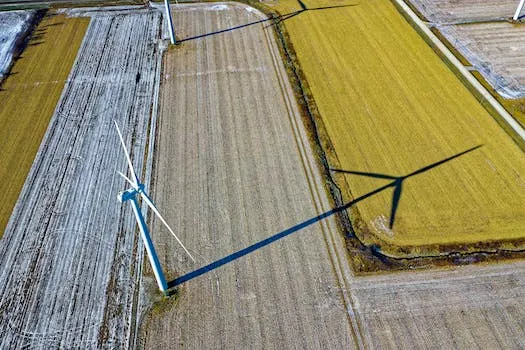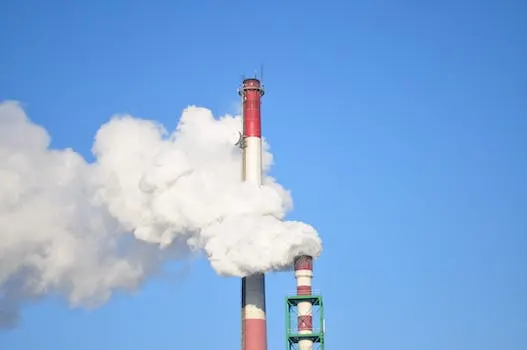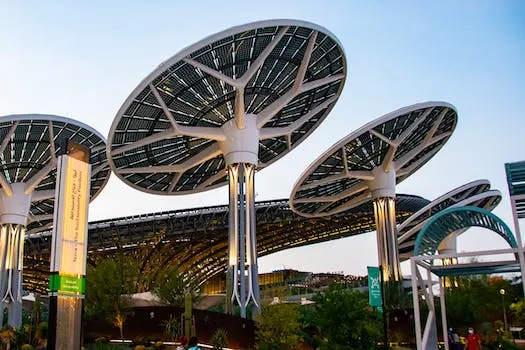
Eco Drive: The Revolutionary Way to Save Fuel and Reduce Emissions
Eco Drive is a revolutionary way to reduce the environmental impact of our driving habits. It can help us save fuel, reduce emissions, and even save money. Americans drive trillions of miles every year, making transportation the biggest contributor to United States greenhouse gas emissions. Cars and trucks alone account for twenty percent of all greenhouse gases emitted in the United States. Driving a car has a significant environmental footprint due to its contribution to global warming; cars and trucks account for nearly one-fifth of all US emissions related to global warming. Global warming is caused by an increase in greenhouse gases in the atmosphere which traps heat from the sun, leading to extreme weather events and climate change. Eco Drive provides an opportunity for individuals to make a difference by reducing their personal vehicle's contribution towards global warming through fuel savings and reduced emissions.
What is Eco Drive?
Eco Drive is a revolutionary driving technique that seeks to maximize efficiency by reducing fuel consumption and emissions. It involves driving in a smooth, efficient manner that minimizes acceleration and braking. This technique is based on the idea that the more fuel you use, the more emissions you produce, so the less fuel you use, the less emissions you produce. Eco-driving is all about maximizing your fuel efficiency by avoiding unnecessary acceleration and braking. It’s about driving at a steady speed, making the most of the natural flow of traffic, and using the right gear at the right time. This helps reduce fuel consumption and emissions while also making your driving experience smoother and more enjoyable.
Eco-driving is a multidimensional concept that includes not only driving behavior but also route selection as well as other choices or behaviors related to vehicles' fuel usage. To develop an understanding of smooth acceleration it's important to know how it works: when pressing down on gas pedal (accelerator), more fuel is fed into engine which increases speed; however if too much pressure applied then this can lead to excessive burning of gasoline resulting in higher levels of CO2 emission from vehicle exhaust pipe. To avoid this situation eco-drivers should practice gradual acceleration instead of sudden bursts which will help them save money on gas while also reducing their carbon footprint significantly over time.
In addition to eco-driving techniques there are other ways one can reduce their vehicle's fuel consumption such as avoiding idling or turning off engine when parked for extended periods; using cruise control whenever possible; keeping tires properly inflated; ensuring regular maintenance checks are done on car etcetera - all these measures combined can result in significant savings both financially as well as environmentally speaking! Furthermore eco-driving training has been proven effective in reducing truck drivers' diesel consumption & CO2 emission levels - something which could have far reaching implications for global climate change efforts if adopted widely enough across industry sectors worldwide!
How Does Eco Drive Work?
Eco driving is a revolutionary way to save fuel and reduce emissions. It involves a few key steps that can help you make the most of your car’s potential. Accelerating slowly and steadily is important, as accelerating too quickly can use up a lot of fuel. Maintaining a steady speed helps to avoid unnecessary acceleration and braking, which also uses up more fuel than necessary. Using the right gear at the right time helps you make efficient use of your car’s engine, while anticipating traffic can help you plan accordingly so that you don't have to accelerate or brake too much. Minimizing idling is also important as it uses up a lot of fuel, so try to avoid it when possible. Finally, using navigational tools can help you find the most efficient route for your journey.
Obeying the speed limit and accelerating and braking gently are essential components of eco driving in order to save fuel and reduce emissions. Accelerating gently means easing onto the accelerator pedal instead of pushing down hard on it; this will ensure that less fuel is used in city driving where nearly 50% of all energy consumed by cars goes towards acceleration alone. On level roads, cars run most economically at constant speeds achieved by holding the accelerator pedal in one position; this style of driving reduces energy consumption significantly compared with aggressive acceleration or deceleration habits such as speeding up then slowing down again quickly or vice versa.
In addition to gentle acceleration, eco drivers should also be mindful about their speed limits; excessive speed has been identified as one of biggest factors contributing to increased fuel consumption so having a light right foot when it comes to speeding will go far in helping drivers save on their petrol costs while reducing emissions at the same time! Eco drivers should also anticipate traffic conditions ahead so they know when they need to accelerate or brake; this allows them plan accordingly without having sudden changes in speed which would otherwise cause an increase in energy consumption due to sudden accelerations or decelerations from high speeds followed by low speeds again quickly afterwards - both scenarios are inefficient ways for cars consume energy! Finally, using navigational tools such as GPS systems can help eco drivers find routes with fewer stops which would result in less idling time - another factor that contributes significantly towards increased petrol costs!
By following these simple steps outlined above - gentle acceleration combined with obeying speed limits while anticipating traffic conditions ahead and using navigational tools - eco drivers could potentially improve their vehicle's fuel economy by 15%-30%. Eco drive is truly revolutionary way for motorists everywhere looking for ways reduce their petrol costs while reducing emissions at same time!
Benefits of Eco Driving
Eco-driving is a revolutionary way to save fuel and reduce emissions. It involves adopting five fuel-efficient driving techniques that can lower your vehicle's fuel consumption and carbon dioxide emissions by as much as 25%. Eco-friendly driving reduces fuel consumption, exhaust emissions, and has a direct link to safety. The reduction in power leads the car to accelerate more slowly, resulting in less gas being used and fewer emissions created. Benefits of eco mode include improved traffic safety, reduced driving stress and greater comfort for drivers and passengers, smoother traffic flow, money savings on fuel costs, as well as reduced fuel consumption and emissions. Studies have shown that eco-driving is highly effective in reducing both fuel consumption and CO2 emissions in both large congested cities or small towns. Savings between 5% - 15% are possible with the right techniques employed correctly. Eco-driving not only helps you save money but also helps protect the environment by reducing your carbon footprint.
Tips for Eco Driving
Eco driving is a revolutionary way to save fuel and reduce emissions. To get started, it's important to plan your route ahead of time and use navigational tools like Google Maps to find the most efficient route. Regular maintenance and tune-ups are also essential for keeping your car running efficiently. Be sure to Keep an eye on the speed limit, as driving too fast can significantly increase fuel consumption. Additionally, make sure your tires are properly inflated as this will help maximize fuel efficiency. When stopped at a red light or in traffic, turn off your engine after 30 seconds or more of idling in order to reduce fuel consumption even further. Cruise control is another great tool for maintaining a steady speed while reducing fuel consumption.
The Google Maps app can be especially helpful when eco driving as it provides estimates on some routes based on the type of vehicle you're using that show how much energy or fuel you'll be saving by taking that particular route. Combining multiple trips into one can also help save both time and money while reducing emissions at the same time; just Make sure you stay tuned into traffic reports so you know which routes have construction areas or other delays that could slow down your journey unnecessarily. Checking tire pressure before leaving is also important; aim for roughly every 1,000 miles during long trips and check again if there's been any significant changes in elevation during the journey since this could affect tire pressure levels too.
Finally, drive gently whenever possible; accelerating quickly uses up more gas than gradually increasing speed over time does so try not to floor it when possible! Getting regular tune-ups will also help keep your car running smoothly while maximizing its efficiency levels too - plus don't forget about keeping up with oil changes as well! With all these tips combined together, eco driving becomes an easy way to save money on gas while helping out the environment at the same time!
Conclusion
In conclusion, eco-driving is a revolutionary way to save fuel and reduce emissions. By driving in an efficient manner and making the most of your car’s potential, you can reduce fuel consumption and emissions, as well as save money on fuel costs. Eco-driving can help you lower your fuel use and costs, reduce exhaust emissions including CO2, reduce vehicle wear, increase safety and even save hundreds of dollars in fuel each year. To effectively benefit from eco-driving techniques it is important to drive efficiently by avoiding hard acceleration or braking which can waste fuel. Additionally, following the tips outlined above such as using cruise control when possible or maintaining a steady speed will help you become an eco-friendly driver while saving money at the same time.










